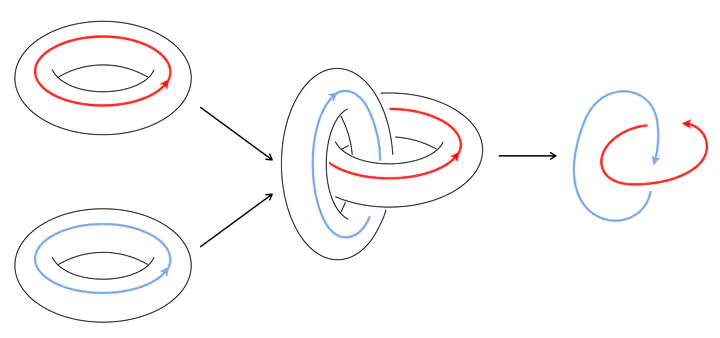Topological order on a torus
 Calculating the overlap between two states. picture Zhuan Li
Calculating the overlap between two states. picture Zhuan LiAfter the discovery of the Fractional Quantum Hall effect, more and more bizarre phases of matter that cannot be described by the Landau-Ginzburg symmetry-breaking paradigm were found. Instead of normal order parameters, these phases are characterized by robust ground state degeneracy, nontrivial particle statistics, and gapless edge excitations. These properties are robust to small Hamiltonian deformations, making them a potential candidate for fault-tolerant quantum computation.
While multiple exact solvable microscopic Hamiltonians realize the nontrivial topological phase, the inverse problem—i.e., determining the topological phase from the microscopic Hamiltonian—is extremely challenging. Many existing methods are based on the belief that the ground state alone encodes all the information regarding the topological order. A well-known example is that: on a torus, the ground state degeneracy equals the kinds of point-wise excitation of the system.
To extract more information from ground states, we can take other operations, such as the overlap of states. Xiaogang Wen first proposes obtaining the topological data from the overlap of ground-state wavefunctions. However, his argument relies on a continuous deformation in the moduli space (i.e., torus geometry) and is rather impractical to implement in a lattice system.
We addressed this issue by explicitly constructing operators associated with the physical process and carefully keeping track of the unnecessary phases related to physical/lattice systems. By consistently arranging the phases along every simple loop on the torus, we successfully justified Wen’s results in a lattice system.